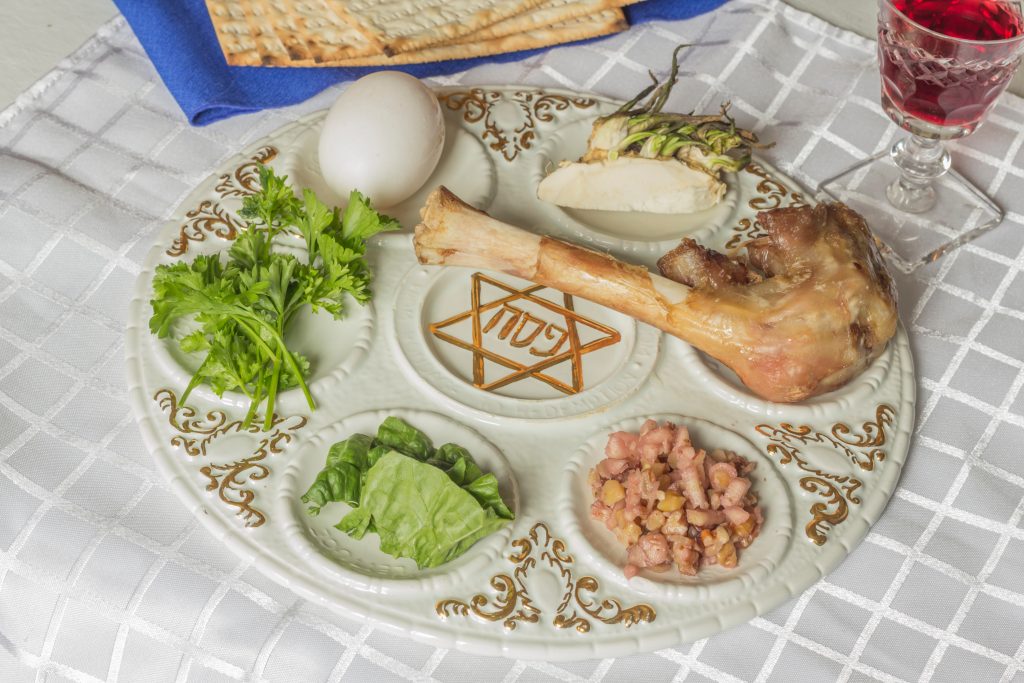The Art of Leading a Seder
Participating in a Seder comes naturally to those who grew up in observant families or who had the benefit of a Jewish day school education. But what about ba’alei teshuvah or those who don’t have an extensive Jewish background? What if the guests at your Seder don’t know much about Pesach?
Anyone with the proper attitude and preparation can lead a Seder. Keep in mind that you want to keep everyone, but especially the children, awake and interested.
Can you sing? The Seder is full of readings that can be sung. If you can’t sing, tell stories. If you can’t tell stories, teach.
Can you shop? In the weeks before the Seders, look for props: prizes for guests who ask good questions or who find or ransom the afikomen; toys that illustrate the Ten Plagues—everyone loves toy frogs.
If you have a theatrical bent, invest in a Bedouin costume and a staff. A friend of mine surprised everyone at the Seder, including his family, when he appeared in desert garb. It changed the tenor of the evening.
Another friend has her children review a section of the Haggadah and draw up a list of questions the afternoon before the holiday. What does a certain word mean? Why did a particular event happen? Why did personalities in the Haggadah speak or act in a certain way? The children needn’t answer their questions, as the answers can be provided that night by people seated at the Seder table; my friend simply wants her children to start thinking.
To spur participation—especially among an older, more sophisticated crowd—suggest a theme of contrasting symbolisms that will become evident through the evening’s readings. We’re all familiar with one: slavery and freedom.
I have found it effective to establish one simple theme at the beginning of the evening that can serve as a common thread for the whole night. Throughout, I paint the Seder as a journey: in time and space, from Egypt to the Promised Land, from a people engrossed in idolatry to a nation that has grown in holiness.
To build interest from one Seder to the next, assign homework. Ask a question the participants will be able to consider during the first day of the holiday. Some possible questions include “If you had to leave your home on short notice and could bring only a small suitcase, what would you pack?” Or, “What are today’s forms of idolatry?” Or, “Would you be willing to give up a life slavery for an unknown future in a wilderness?”
To get the most out of your Seder, try using my “Ten Commandments.”
The Ten Commandments of Seder Leading
* Keep it short. If you feel inspired to share a lengthy devar Torah or commentary on an aspect of the Seder, feel inspired another time. Everyone will thank you.
* Keep it moving. Silence is the bane of radio talk-show hosts or sports play-by-play broadcasters. Don’t fill in the unavoidable silence with small talk; at the same time, don’t let there be too much dead time.
* Keep it interesting. A good stand-up comic gauges the pulse of the audience immediately—what type of material works?—and keeps reassessing. Make sure your guests are following you. Once you lose them, it’s hard to get them back.
* Keep it relevant. The text concerns events that took place three millennia ago. But the Exodus story has a contemporary message. Read some books about modern-day slavery. Think Darfur.
* Keep it dramatic. If you’re not a natural actor or actress, fake it.
* Keep it personal. Do you know family stories from the Holocaust? Tell them. Did you learn something poignant in school about American slavery? Use it.
* Keep it at the participants’ level. Children are the focus of the Seder. If the youngest person at the Seder—or the person with the least knowledge of the Pesach story—doesn’t understand what’s happening, you’re not doing your job.
* Keep it understandable. Speak in the vernacular. Don’t speak above people’s heads; don’t use words or concepts that require extensive explaining and, above all, don’t show off.
* Keep it light. Leavening is banned on Pesach. Levity isn’t. An appropriate joke or a favorite relevant story will help sustain everyone’s interest.
* Keep something for the second night. If you take part in two Seders each year, and if the same people are at both, you don’t want to spend all your spiritual capital on the first night. Split up your best material and save some for night two. Your guests should ask “Why is this night different from all other nights?” not “Why is this night just like last night?”
Adapted from Steve Lipman’s book A Bite of Passover: Leading a Seder Step-by-Step.

